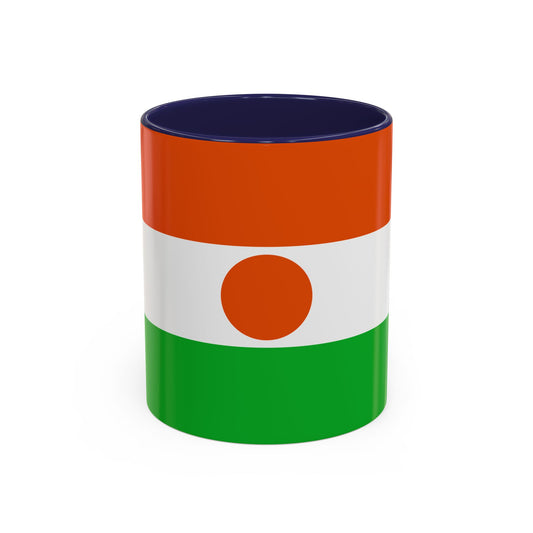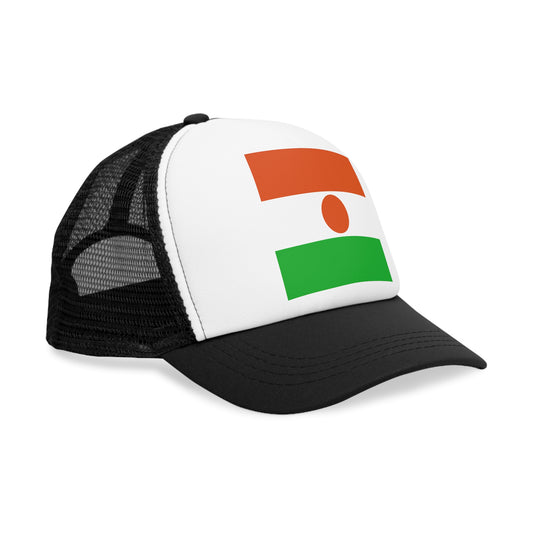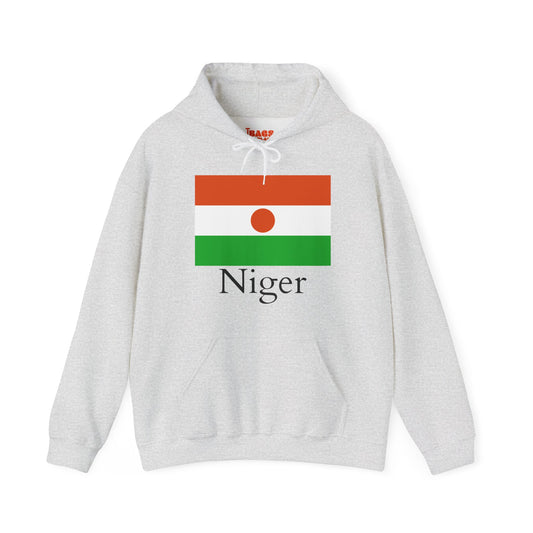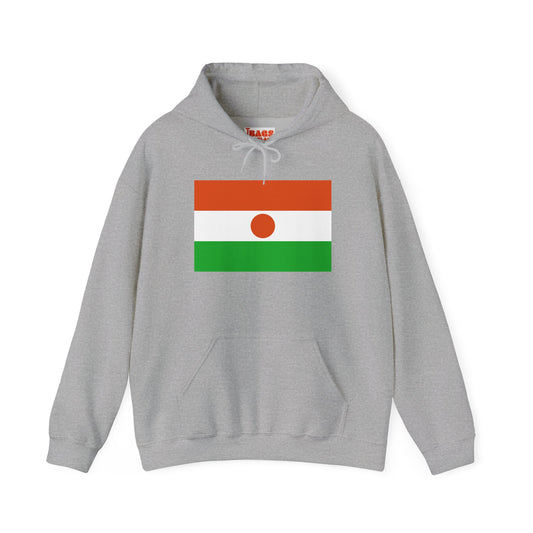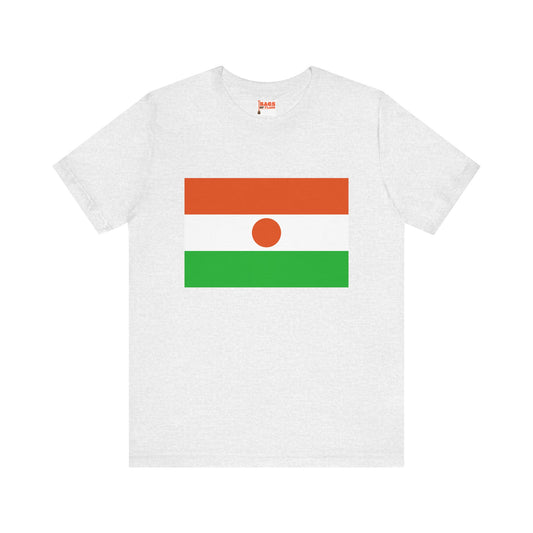-
Niger Sweatshirt
Regular price $34.15 USDRegular priceUnit price / per -
Niger Flag Sweatshirt
Regular price $34.15 USDRegular priceUnit price / per -
Niger Pillow
Regular price $22.65 USDRegular priceUnit price / per -
Niger Backpack
Regular price $59.79 USDRegular priceUnit price / per -
Niger Leather Patch Hat
Regular price $18.85 USDRegular priceUnit price / per -
Niger Trucker Cap
Regular price $14.90 USDRegular priceUnit price / per -
Niger Hoodies
Regular price $34.40 USDRegular priceUnit price / per -
Niger Flag Hoodies
Regular price $34.40 USDRegular priceUnit price / per -
Niger T-shirts
Regular price $22.79 USDRegular priceUnit price / per -
Niger Flag on T-shirt
Regular price $22.79 USDRegular priceUnit price / per
Collection: Niger
The Niger flag is a symbol of national pride and identity for the West African country. This flag, with its unique design and colors, holds deep historical significance and represents the values and aspirations of the Nigerien people.
Overview of the Niger Flag's Design and Colors

The flag of Niger features a distinctive and meaningful design characterized by its colors and symbols. Here's a detailed look at its design elements:
-
Horizontal Stripes: The flag showcases three horizontal stripes of distinct colors:
- Orange at the top
- White in the middle
- Green at the bottom
-
Central Circle: At the heart of the flag is a unique feature:
- An orange circle centered on the white stripe
-
Color Meanings: Each color on the flag carries significant symbolism:
- Orange symbolizes the Sahara Desert, which is a prominent geographical feature of Niger.
- White represents purity and the country’s aspirations for peace.
- Green signifies the fertile regions of Niger and the hope for prosperity.
- Circle Symbolism: The central orange circle symbolizes the sun and signifies the unity and resilience of the Nigerien people.
This design effectively conveys Niger's identity, natural landscapes, and the values held by its citizens.
Historical Context of the Niger Flag
The flag of Niger stands as a beacon of the nation's journey towards independence and its own distinct identity. Here's a concise exploration of the critical milestones and transformations it has undergone:
- Adoption Date: Officially adopted on November 23, 1959, the flag was chosen in anticipation of Niger's independence from France, which was realized on August 3, 1960.
- Pre-Independence: Before adopting its flag, Niger was represented under the French colonial flag, as it was part of French West Africa. Adopting a national flag was a significant step towards asserting its sovereignty and distinct cultural identity.
-
Changes Over Time:
- Although the flag's basic design has remained constant since its adoption, minor adjustments have been made, notably in the shade of orange used. These adjustments reflect the flag's evolving symbolic representation and the nation's changing landscape.
- Variations have been made to the flag's dimensions and hue, each designed to ensure more precise symbolic representation and visibility.
- Symbolic Adoption: The flag's adoption was closely tied to historical events leading to independence. It symbolized a break from colonial rule and establishing a national identity focused on unity, peace, and prosperity.
- No Major Overhauls: Unlike some national flags that have undergone significant changes following political shifts, the Niger flag has remained relatively unchanged, signifying a steady national identity amidst regional and global changes.
Symbolism Behind the Niger Flag

Delving deeper into the symbolism, the Niger flag's colors and central emblem narrate a story intrinsic to the country's identity and ethos. The top orange stripe is a vivid reminder of the expansive Sahara Desert that dominates much of Niger's landscape, illustrating the country's geographical challenges and its people's resilience. The white middle stripe transcends a mere call for peace, symbolizing purity and the high aspirations of the Nigerien populace for harmony within and beyond their borders. The green stripe at the bottom is not just a representation of the fertile lands but is symbolic of hope and the anticipation of prosperity, reflecting the agricultural backbone of the nation and its growth potential.
At the flag's core, the orange circle is more than an aesthetic feature; it captures the essence of the sun's life-giving energy and resilience, highlighting the unity and tenacious spirit of the Nigerien people. Together, these elements do not just represent the physical attributes of Niger but encapsulate the collective aspirations, enduring strength, and the rich cultural heritage that define the nation. Through its flag, Niger articulates a vision of unity, peace, and prosperity, forging a distinct national identity that resonates with its citizens and the wider world.
Current Relevance of the Niger Flag
Today, the Niger flag is a beacon of unity and pride, prominently featured at national celebrations, official state functions, and military parades, symbolizing the enduring spirit and sovereignty of the nation. It is a common sight at international sporting events, where athletes carry it as a symbol of national pride and determination. Despite its widespread respect and use, the flag has not been without its controversies. Discussions have emerged over its representation and the appropriateness of its use in certain political contexts, sparking debates about national identity and the values the flag stands for. These discussions underscore the flag's significance in the socio-political landscape of Niger, highlighting its role not just as a national symbol, but as a focal point for dialogue and reflection on the country's path and principles.
Additional Facts About the Niger Flag
In the protocol of flag display, the Nigerien flag commands respect, mirroring the nation's rich heritage and values. It is customarily raised at dawn and lowered at dusk, ensuring its prominence in the daily lives of the citizens. This practice underlines the importance of the flag as a constant reminder of the country's sovereignty and unity. Additionally, care is taken to prevent the flag from making contact with the ground, a universal sign of respect for national symbols.
One of the more intriguing aspects of the Niger flag's usage is its role in international sports competitions. Here, it serves not only as a marker of national identity but also as a rallying symbol for the country's athletes, inspiring performances that resonate with pride and collective ambition. This aspect of the flag's presence on the global stage underscores its ability to unify and motivate, transcending cultural and linguistic barriers.
Beyond its conventional uses, the flag of Niger is a subject of interest among vexillologists (flag experts) and enthusiasts around the world. Its elegant simplicity combined with deep symbolic meanings makes it a fascinating study, highlighting how the principles of design and color can convey a nation's story and aspirations. The flag's specific hues and the central circle's placement are often discussed in forums dedicated to the study of flags, emphasizing the thoughtfulness behind its creation.
This interest extends to educational contexts, where the Niger flag is used as a tool for teaching about African geography, history, and the symbolism imbued in national icons. As such, the flag is not only a national emblem but also an educational resource, offering insights into the values, struggles, and achievements of the Nigerien people. Through these varied applications, the flag of Niger continues to inspire and educate, both within its borders and beyond.












